For me, every trip through the Eastern Sierra has to start or end with a hot spring. In a former life, I think I was a balneologist — one who studies the therapeutic effects of thermal baths. Now I just like to pretend I’m one!
I have my favorites, like the Long Valley Caldera classics off Benton Crossing Road, but I also love to discover new springs, especially ones that take me a few wrong turns to find.
That’s what happened with Travertine Hot Springs, a cluster of pools near the little-known town of Bridgeport. Or rather, it’s a well-known town if you often traipse through the Sierra, despite a population of just 575. You pass the whole town by the time you blink, but just south of it exists a somewhat surreal spring. There are no signs for Travertine until you actually reach the parking lot — a mile after the dirt road turn-off.
Walk past the concrete-lined tub in the parking lot — the lazy man’s pool, as it’s known — and you’ll reach a short trail with snow-capped views of the Sawtooths.
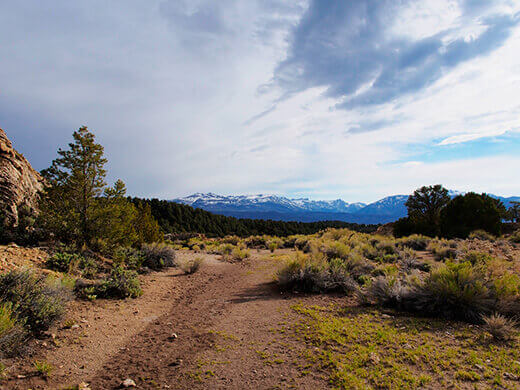
If you go up — rather than down — the trail, you’ll find yourself on a rocky, calcified ridge nearly split in half by a geothermal fissure.
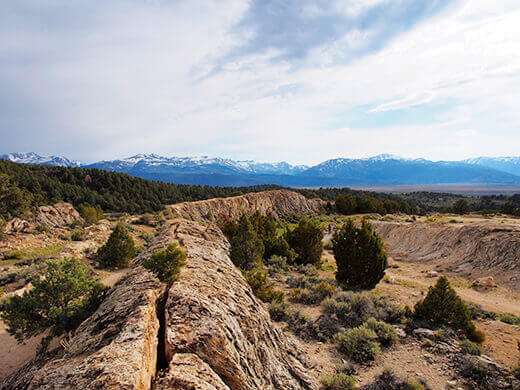
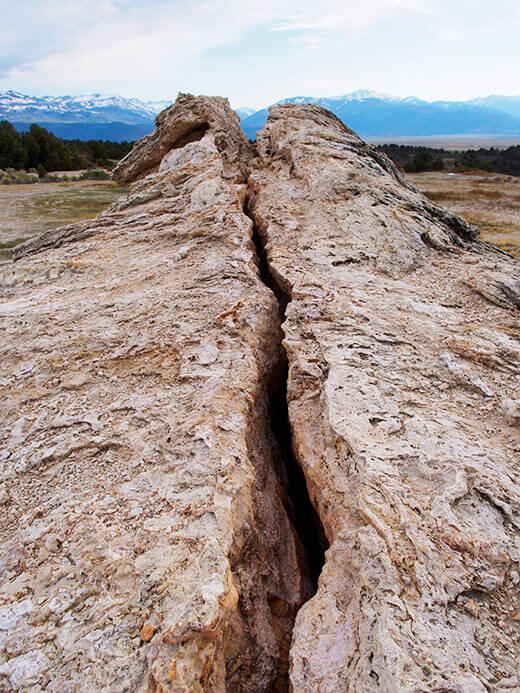
Down below, five primitive pools glimmer in the middle of a mud field.

A narrow trough carved naturally into the small ridge above the pools brings thermal water from its underground source up to the surface, where it trickles down an alien-like tufa — a rock and mineral formation composed primarily of travertine (a type of limestone for which the springs are named) and a rainbow of algae.
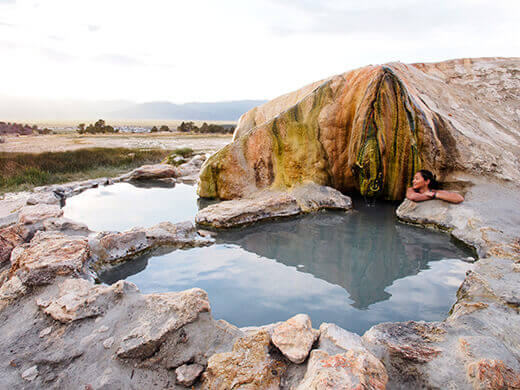
The water from the source is piping hot, making the first tiny pool right below the tufa a toasty 105°F or so. As the water filters down into the remaining pools, it gets progressively cooler. The very last pool, furthest from the tufa, is also the shallowest and feels like a lukewarm bath.
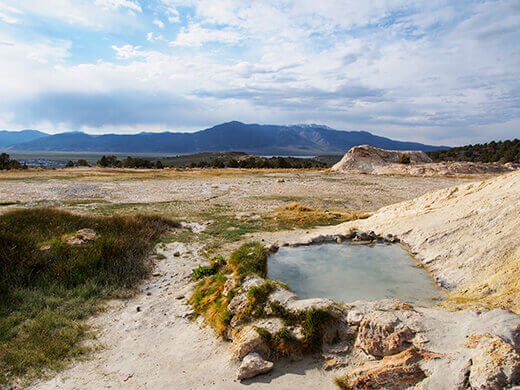
There’s a lot of mud in these pools. Slightly sulfuric and soothing on the skin… this is the type of stuff salons charge big money for. And you don’t even get the view.
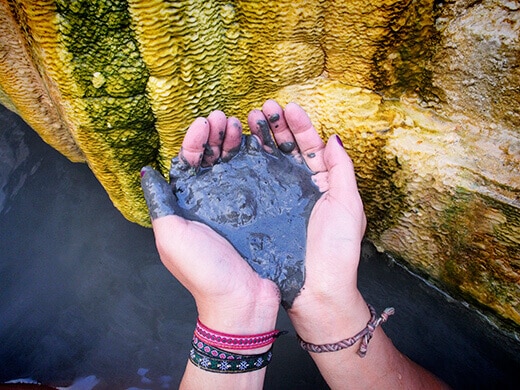
In fact, the whole area is so geothermally active that natural springs have erupted everywhere, giving the ground a soft, squishy feel as you walk over mounds and craters of yellow-gray clay. At times I was afraid I’d step in quicksand!
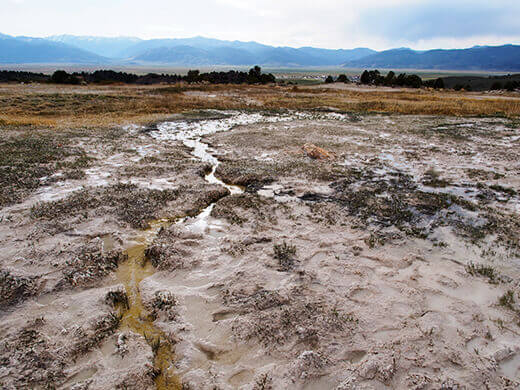
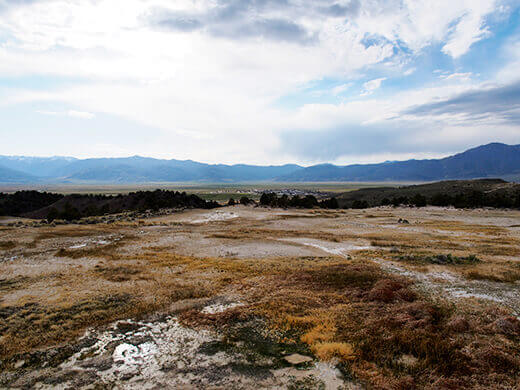
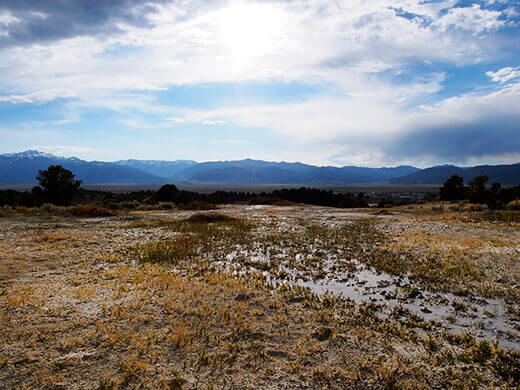
A little past the main pools are a few other springs worth exploring, especially if you want privacy.
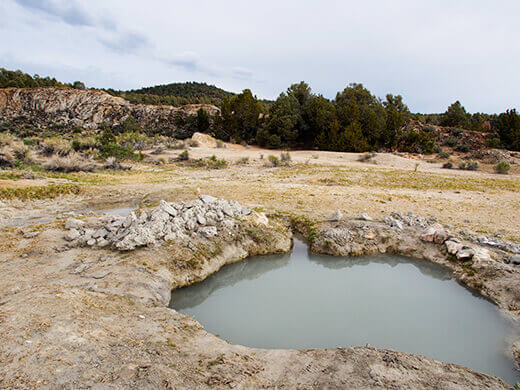
Though Travertine is a fairly well known and popular spot for hot spring “tourists,” as I like to call them, there are times when you’ll find the thermal baths and mountain views yours alone. Those are the magic times.
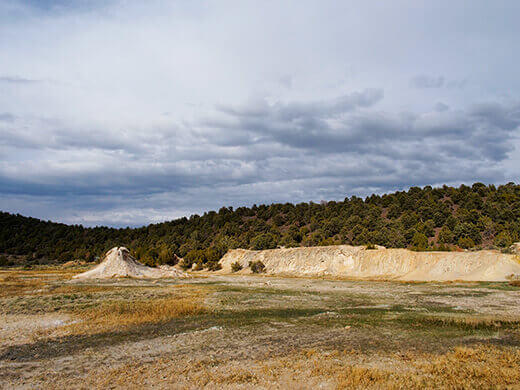
Surprisingly, I found that magic time right before sunset, when I thought the pools would be their busiest. As people in varying degrees of suits and birthday suits started emptying out, the area took on a serene and otherworldly atmosphere with the sky casting reflections in the glassy water.
After a long week of mountain biking, kayaking and camping on the border of California and Nevada, a good soak did me right.
Next time, I might just have to visit on a full moon night.
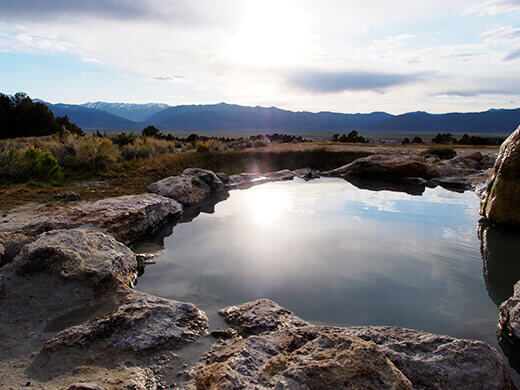


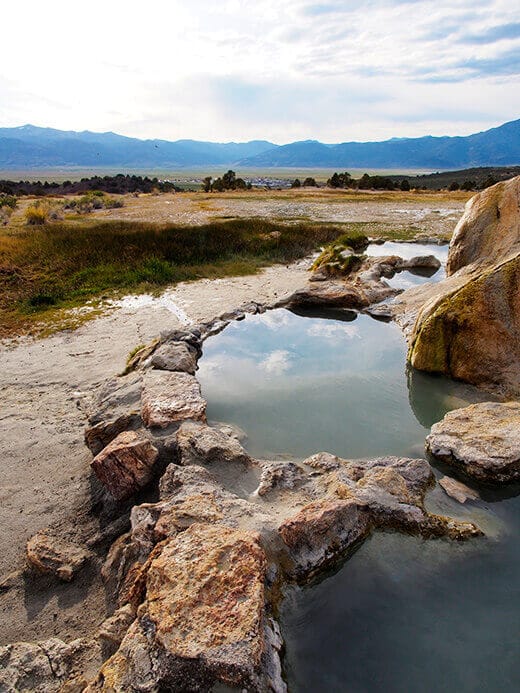













If you’re traveling the Eastern Sierra this summer, this is a must-stop: Travertine Hot Springs http://t.co/14N09sHvPA #california #roadtrip
Travertine Hot Springs.Mud glorious mud + free running hot water! http://t.co/3pRg43uK9H #destination #adventure #Sierra
A must-see and must-soak after a weekend of camping in the Sierra. Travertine Hot Springs http://t.co/tnIsXTcJVg #california #travel
A not-so-secret but still spectacular thermal bath in California’s Eastern Sierra. Travertine Hot Springs http://t.co/lcvGAtr9FV #travel
Take an otherworldly soak in the middle of nowhere. Travertine Hot Springs http://t.co/yNdYVYkaIE #california #easternsierra
Every trip through the Eastern Sierra has to start or end with a hot spring. Travertine Hot Springs http://t.co/BtqcFPiRq1 #california
The best hot springs are the ones that take a few wrong turns to find. Travertine Hot Springs http://t.co/nxP5z2KsJU #california #travel
An Eastern Sierra gem if you love a good soak with a great view. Travertine Hot Springs http://t.co/BcOxpuUw52 #california #sierra
Kitchen Garden Maui liked this on Facebook.
Jun Iguchi liked this on Facebook.
Sweet, I know the area B|
beautiful! Thanks for sharing.
Jaime Giswold liked this on Facebook.
Travertine Hot Springs:
For me, every trip through the Eastern Sierra has to start or end with a hot spring. … http://t.co/KjnDlXGAud
Blogged on Garden Betty: Travertine Hot Springs http://t.co/SBo1QRBD3d